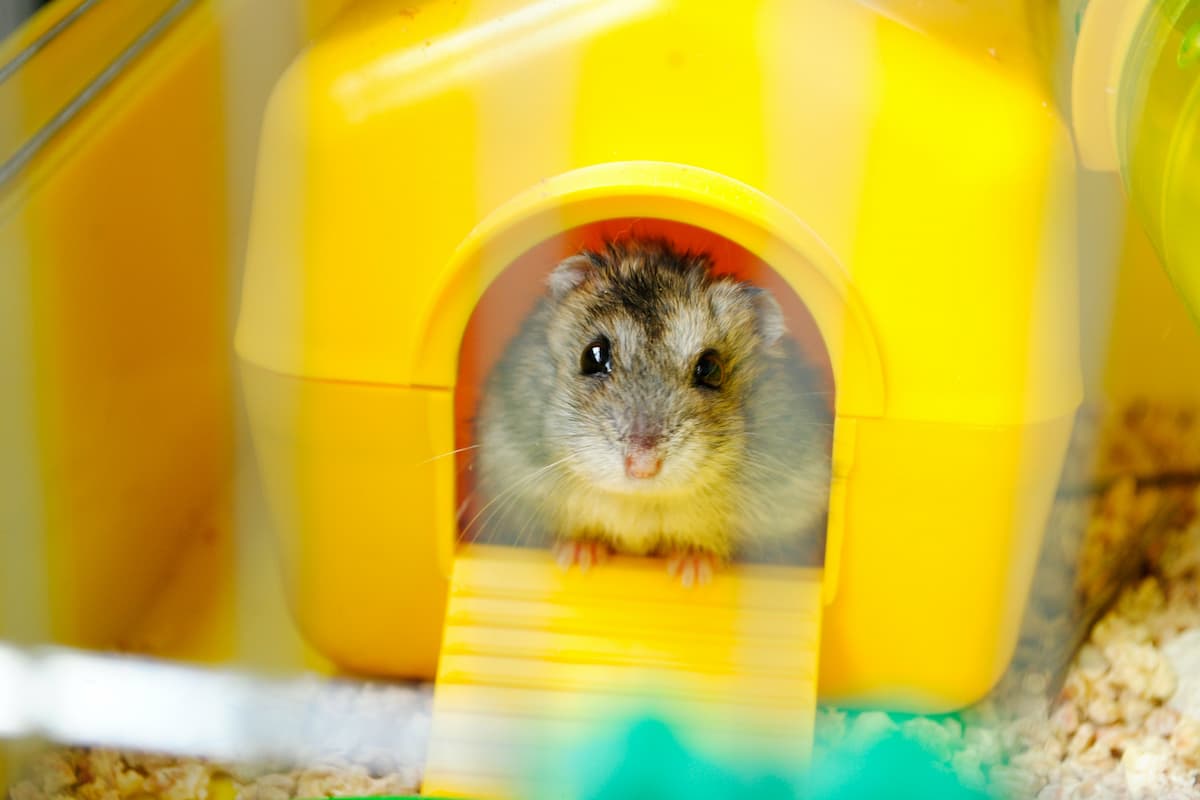Can You Take A Hamster On A Plane? (TSA Dos and Don’ts)
Hamsters may be small, but just like any other pet, they are a big part of their owner’s life.
When traveling by plane with your pocket-sized companion, there are certain things to keep in mind.
The TSA allows small pets through security checkpoints, but passengers must confirm with their airlines before traveling with their hamsters. If the airline allows hamsters onboard, ensure the pet carrier is the correct size and weight and is cozy, secure, and well-stocked for the duration of the flight.
Follow along for more information on flying with hamsters, how to pack these tiny creatures for the plane, and the best ways to travel with your little furry friend.
Can You Bring a Hamster as Carry-On Luggage?

Although the TSA permits small pets like hamsters to pass through security checkpoints, they highly recommend that passengers check with their airline before bringing them along.
US airlines typically default to the policies set by the TSA; however, when it comes to pets, each airline tends to have its own rules.
Restrictions include weight limits (between the animal and carrier combined), age requirements, and caps on how many pets are allowed on the aircraft.
When airlines allow hamsters as carry-on, they usually require that the carrier fit beneath the plane’s seats and adhere to the airline’s carry-on baggage policies.
For example, some airlines limit the size of pet carriers and consider them as personal items.
They restrict passengers from bringing additional bags or require extra payment for additional carry-on items.
Travelers should also consider bringing medical certificates that state that their hamster is healthy and disease-free, especially if traveling abroad.
Before traveling internationally, passengers must confirm that hamsters are allowed through customs at their destination and check that any connecting airlines permit traveling with a hamster.
What Is Security Like When Bringing a Hamster on a Plane?
When going through security checkpoints in the United States, the TSA asks that pets be removed from their carriers.
The TSA then scans the carrier using the x-ray machines/CT scanner and may swab it and your other carry-on items for explosive residue as part of enhanced screening procedures.
During this process, you must maintain control of your pet, remove any metal leashes or collars, and carry them through the metal detector.
The carrier may also be subject to a visual and/or physical inspection before the TSA clears it for travel.
Can You Bring a Hamster as Checked Luggage?
Some airlines prefer that hamsters travel in the luggage hold as long as they meet standard size and weight requirements.
However, traveling in the cargo hold can be extremely stressful for pets. Passengers should use their discretion and the advice of their veterinarian when deciding whether it will be appropriate for their furry pal.
How Much Does it Cost to Take a Hamster on a Plane?

The cost of bringing a hamster on a plane varies depending on the airline, carrier’s weight and size (including the animal), the destination (domestic vs. international), and the mode of transportation (i.e., checked luggage or carry-on).
Most airlines allow passengers one complimentary personal item that fits under the seat in front of them – some airlines will allow passengers to use their pet carriers as that item.
Some airlines charge additional pet fees, regardless of whether they fit under the seat.
Before heading to the airport with your four-legged friend, ensure you contact the airline about their pet policies and any additional costs.
How to Pack a Hamster for Air Travel
Whether the hamster travels in the cabin or the cargo hold, its carrier must adhere to the airline’s baggage policies and be leak-proof, escape-proof, spacious, and provide ventilation on at least two sides.
It also helps to familiarize hamsters with their travel carrier before the trip – the more recognizable the surroundings, the calmer the hamster.
Travelers can keep their hamsters occupied during the flight by stocking the carrier with toys, chew sticks, snacks, water, a hidey home, and comfortable bedding.
When packed in an appropriately stocked carrier, a hamster will be safe and comfortable for up to 9 hours.
They’re also nocturnal, so depending on the flight, they may even snooze the whole ride.
The Best Way to Travel With a Hamster

Honestly, the best way to travel with a hamster is by car.
In a vehicle, you have more space, more control over the environment, and there’s less chaos and stimulation than there would be with air travel.
If you must travel by plane with your hamster, the first thing to do is take them for a check-up.
The vet will determine whether the animal is healthy enough to make a high-altitude voyage and provide official documentation that your hamster is disease-free.
When selecting an airline, try to choose one that allows hamsters as a carry-on so you can routinely check on your pet and make sure they’re ok.
If possible, select direct flights without connections or airline transfers – subjecting a hamster to multiple security checks could be stressful for them.
Ultimately, traveling with pets is hard for them and their owners.
Sometimes, the best option is to leave hamsters at home in the care of a trusted friend or family member.
Conclusion
The TSA permits small pets like hamsters through the security checkpoint, but travelers must check with their airline before bringing their furry friend onboard the aircraft.
If the airline allows hamsters in checked or carry-on luggage, passengers must ensure that the carriers are comfortable, secure, ventilated, and fully stocked for the journey.
If travelers must bring their hamsters on a plane, they should get their vet to sign off on the trip and opt for an airline that allows pets as carry-on.
Otherwise, if possible, it’s better to travel with a hamster by car or leave them at home with someone you trust.